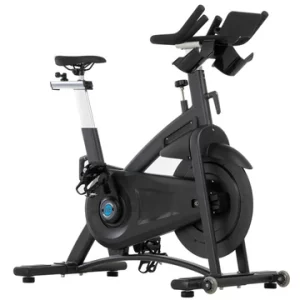Ejercicios que puedes realizar en tu embarazo
Conoce los beneficios que estos te traerán
Que la gran noticia de estar embarazada no te detenga para continuar con tu rutina de ejercicios, muchas personas consideran que realizar actividad física durante este tiempo es perjudicial para la salud tanto de la madre como la del bebé, esto es un gran mito o tabú, por el contrario la actividad física durante la gestión es recomendada, claro está que debes encontrarte en un estado saludable y que tú médico te dé el permiso.
A continuación te contaremos algunas de las actividades que puedes realizar durante tu embarazo:
- Ciclismo o spinning, es excelente para mejorar el flujo sanguíneo en las piernas, para estimular la circulación y además reduce los coágulos en la sangre.
- Senderismo o caminata, es un muy buen ejercicio para las mujeres no tan activas y que su médico les recomendó realizar algún tipo de actividad física.
- Running, este ejercicio lo puedes realizar a un ritmo cómodo, esto es muy bueno para ayudarte a mantenerte en forma, debes asegurarte no sobrepasarte y saber leer bien tu cuerpo, de igual manera debes contar con buenos tenis para que te ayuden a cuidar tus tobillos y pies ya que son ellos los que van soportar el peso que vas a ganar con el embarazo.
- Natación, nadar es una de las mejores maneras para mantener tu vida física activa, además el agua hace que tus articulaciones y músculos sean más livianos, así podrás realizar tus ejercicios de resistencia sin ningún tipo de problemas.
- Pilates y yoga, con estos ejercicios podrás relajar tus articulaciones y ligamentos sobre todo los de la zona pélvica, estos ejercicios deben ser guiados o tener conocimiento de cuáles son los adecuados para el embarazo, ya que hay algunos que no puedes realizar en este estado.
Recuerda que todo los ejercicios mencionados anteriormente deben estar bajo la autorización o supervisión de tu médico, no todas las mujeres son iguales y algunas pueden presentar embarazos de alto riesgo, siempre sigue lo que tu médico te indique.
Además los ejercicios te ayudarán a reducir los dolores de espalda, estreñimiento, distensión estomacal, hinchazón, promover el tono muscular, fuerza, resistencia, ayuda a dormir mejor y al nivel de energía. También te puede prevenir el riesgo de diabetes gestacional, reducción de tener cesárea y hace que tu trabajo de parto sea más fácil.
Nuestros destacados

Set De Movilidad 3 EN 1 – Sport Fitness 71465
Original price was: $118.795.$95.036Current price is: $95.036. IVA Comprar Ahora
Lazo Para Salto JR4317 – Sport Fitness 71588
Original price was: $63.398.$50.718Current price is: $50.718. IVA Comprar Ahora
Bicicleta Spinning Magnética Benevento – 70396
Original price was: $3.590.517.$2.872.413Current price is: $2.872.413. IVA Comprar Ahora





